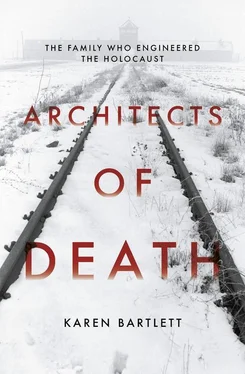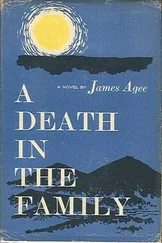It is strange that it is especially the counter-ventilation motor and its pipe that are being dismantled and sent to other camps – Mauthausen and Gross-Rosen. Since these are required for the gassing of large numbers of people and there was never any such mechanism in Crematoria IV and V, it seems that they are planning to recreate these facilities for the extermination of the Jews elsewhere. [107] Schüle, op. cit., p. 223. Special unit notices gas chambers being dismantled for use elsewhere. AS footnote 277 : Inmitten des grauenvollen Verbrechens. Handschriften von Mitgliedern des Sonderkommandos [ In the Midst of Heinous Crime. Handwritten notes by members of the Sonderkommando, State Museum Auschwitz-Birkenau, Oświeçim 1996, p. 184f. This handwritten note was found next to Crematorium III in the summer of 1952. Also Ibid., p. 175.
Since the autumn of 1944 the SS had been looking for a suitable site to reconstruct the extermination facilities of Birkenau at the camp at Mauthausen – which was deep inside Austria, and much further from the Soviet advance. Even as late as early 1945, when Auschwitz itself had been liberated and Soviet troops were marching on Berlin, Kurt Prüfer, on behalf of himself and Schultze’s ventilation department, was writing a detailed memo to the construction management unit at Mauthausen:
REF: CONSTRUCTION OF CREMATORIUM (SPECIAL INSTALLATION).Please find enclosed our drawing, reference D 61 654, showing half of the total site area. The main building in the middle will have five three-muffle cremation ovens, connected to two three-pipe chimneys. The external side of the middle building contains the supervisors’ room. The coal store is on the opposite side. To the right and left are the rooms for the waste incinerators with flue gas preheater. We have connected a three-muffle cremation oven and the waste incinerator to this flue gas preheater, which means that the waste gases from the two ovens are fed through the flue gas preheater. The draft of the detailed design will follow as soon as you have confirmed your agreement to the set-up.
Enclosed you will find a list of the terminology used in the naming of the individual rooms. In the event of query, we request that you simply give us the room number. In designing the facilities we have assumed that all components from the concentration camp Auschwitz should be reused.
This applies both to the iron components for the ovens and to the individual inward and outward ventilation systems. New pipework will be required; we will send you a quote for this once we have received your agreement to the construction of the new facilities. We have not included windows or how they should be distributed, since we do not know what will be sent to Mauthausen from A. The same applies to the roof trusses. A further on-site meeting with one of our team may be required before work on the new facilities can begin. If so, you would need to show the priority level on the contract, so that we can obtain the necessary travel permission. Possibly you would prefer to send us Wehrmacht tickets, second class, which you will obtain without difficulty from the Central Administration in Berlin. [108] Schüle, op. cit., pp. 234–5. Kurt Prüfer memo regarding rebuilding at Mauthausen. AS footnote 280: Underlining in original. Quoted from: Terezin Memorial Archive, A 8845 Mauthausen, sheets 1–3.
As this memo shows, Topf and Sons were now entirely used to planning gas chambers, in addition to crematoria, and were prepared to take on responsibility for constructing an entire extermination centre (an extension of their work at Auschwitz, where they had gone beyond their initial remit of ovens, to repairing chimneys, providing ventilation systems and sourcing ‘corpse lifts’). Now all of this could come within Kurt Prüfer’s orbit – and he could even resurrect his idea of using the heat from the ovens to preheat the gas chambers.
Although becoming chief architect of an entire extermination centre appeared to be a role that Prüfer tackled with some relish, his plans came to naught. Topf’s chief fitter, Wilhelm Koch, was sent to Mauthausen to oversee the project, but the planned centre was never built and within weeks the war in Europe was over.
On 7 May 1945 Germany surrendered to the Allies, and by 31 May Ludwig Topf was dead by his own hand. In the course of those few short weeks, the fortunes of Topf and Sons had collapsed, and those who had supported or played a role in the Holocaust were facing the bleak reality that they would have to answer for what they had always maintained were justifiable business decisions – but what others perceived to be heinous crimes.
American troops had reached the concentration camp at Buchenwald one month earlier on 11 April, and were shocked by the appalling conditions. Two months earlier, the camp had run out of coke supplies for the crematorium, which had resulted in several thousand bodies being hastily buried on the southern slope of the Ettersberg mountain, while piles of unburied corpses lay in the yard of the crematorium and rats ran wild throughout the camp. The last days of mass transports of prisoners from Auschwitz and Gross Rosen meant that the death rate at Buchenwald had soared, once again, in its final weeks of operation. In the last three months of operation, 6,000 people had died of starvation or disease; several hundred more died in the days after liberation. When American soldiers opened the Topf-branded ovens in the crematorium they found partially burned bones still inside.
One day after the liberation of Buchenwald, the US Army marched into the Erfurt offices of Topf and Sons and began a Counter Intelligence Corps (CIC) investigation into the company. Ernst Wolfgang Topf later gave his own account of what happened:
They had photographed the installations in the crematorium, together with our company signs. It was only a few days before we had a committee from the military government on the premises. Thorough and detailed investigations were carried out. They reassured themselves that all the files, drawings, parts lists, calculations etc. were all present. Nothing was missing, since every single document proved the only thing it could prove: that so far as we were concerned it had been just another perfectly ordinary business arrangement. [109] Ernst Wolfgang Topf statement, Power without Morals, 1958, Landesarchiv Thüringen - Hauptstaatsarchiv Weimar.
To back this up, Topf representative Kurt Schmidt claimed that when shown a comparison between the oven doors at Buchenwald and the oven doors of a Topf civil crematorium, US Army Captain Faber could see that they were identical. (Of course, this was completely untrue. As Ernst Wolfgang Topf was well aware, every aspect of a Topf oven supplied to the concentration camps differed to those supplied to civil crematoria.)
Yet things were evidently not as cut and dried as Ernst Wolfgang sought to portray. Two weeks after the investigation began, Ludwig Topf met with the company’s now communist-controlled works council to discuss Topf and Sons’ contracts with the SS and address ‘the rumours circulating about the Topf ovens’. In this meeting Ludwig attempted to agree a shared narrative for the company’s involvement in engineering the extermination centres of the Holocaust – and to provide the most innocuous and benign justifications for their actions.
Ludwig begins by stating that the previous day he had spoken to Kurt Prüfer and Karl Schultze about the matter, and he was now talking to the works council in case they too were questioned as part of the investigation. Firstly, Ludwig explains, both the Kori company and the Didier company from Stettin also supplied ovens to the camps – the implication clearly being that Topf’s role was not unique, or special, and that if they had not provided the ovens, another company would have. Moving on, Ludwig describes the origins of Topf and Sons’ relationship with the SS:
Читать дальше












